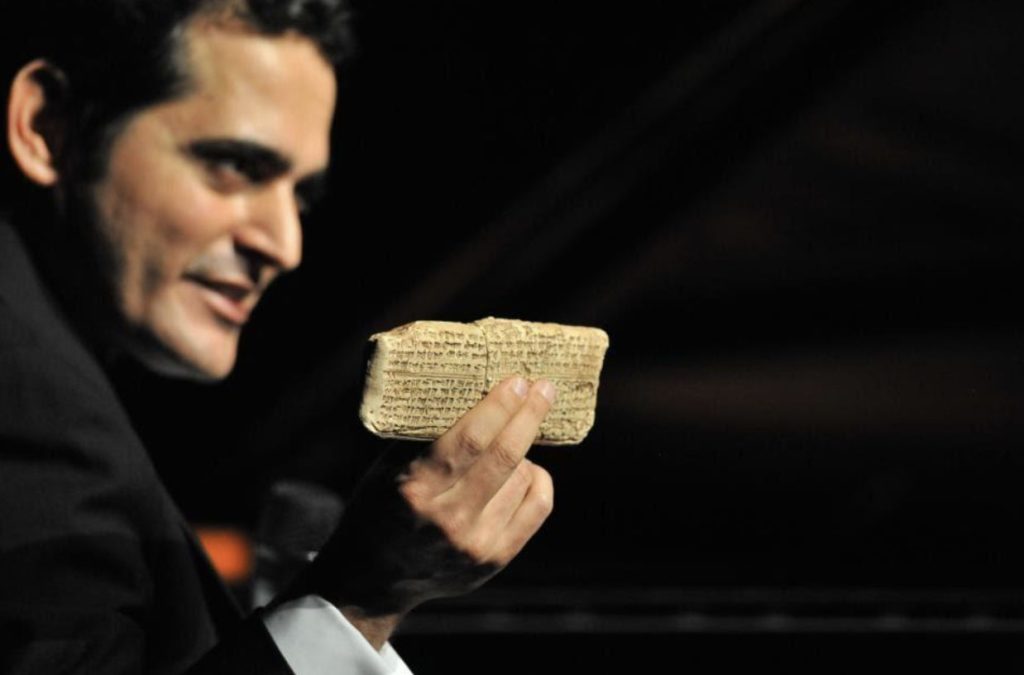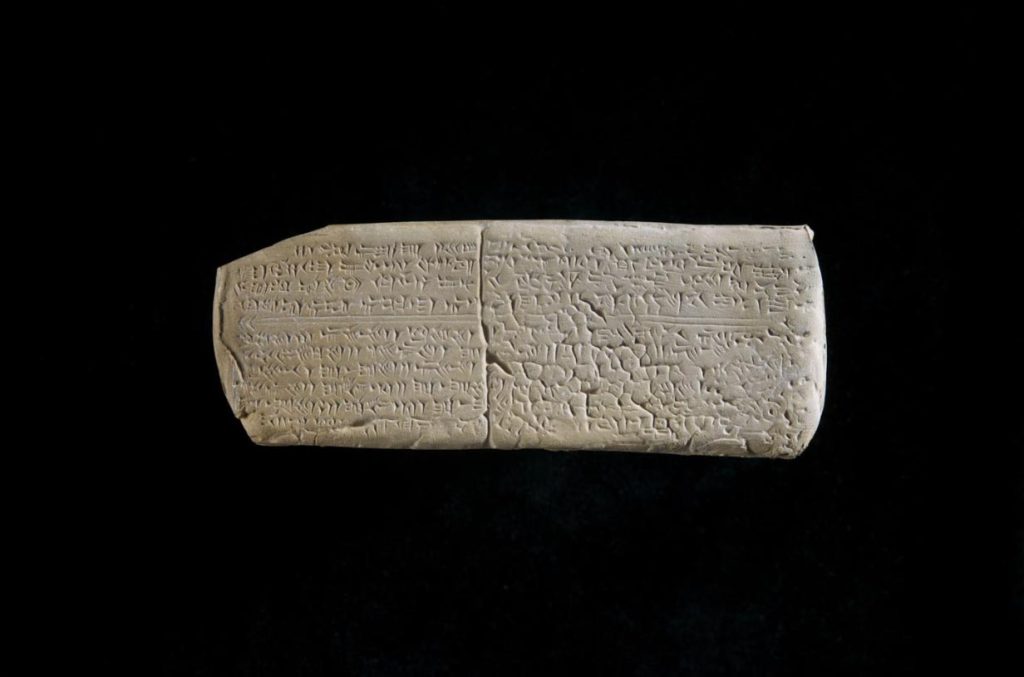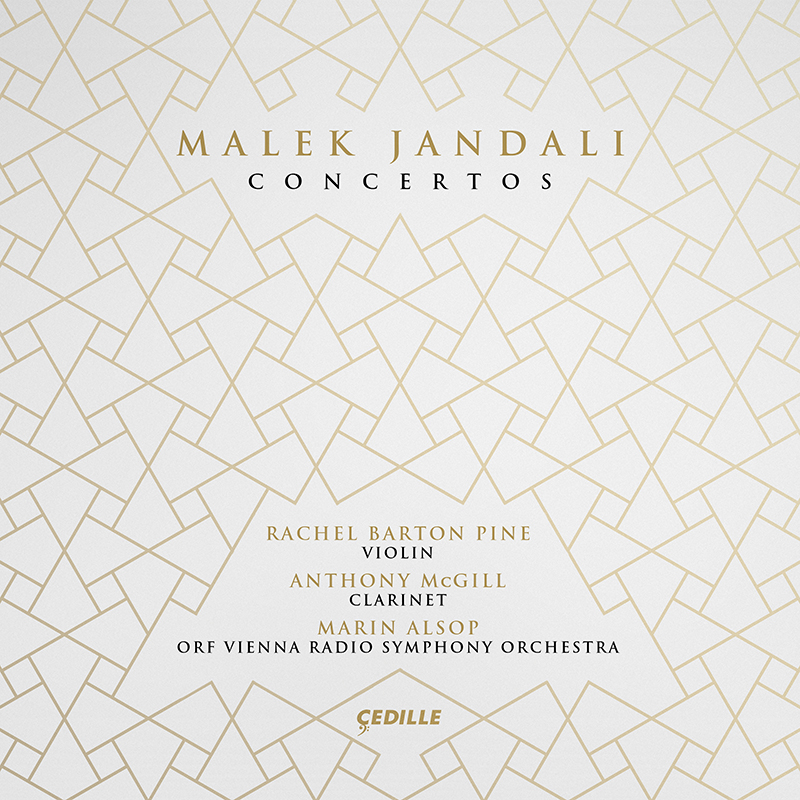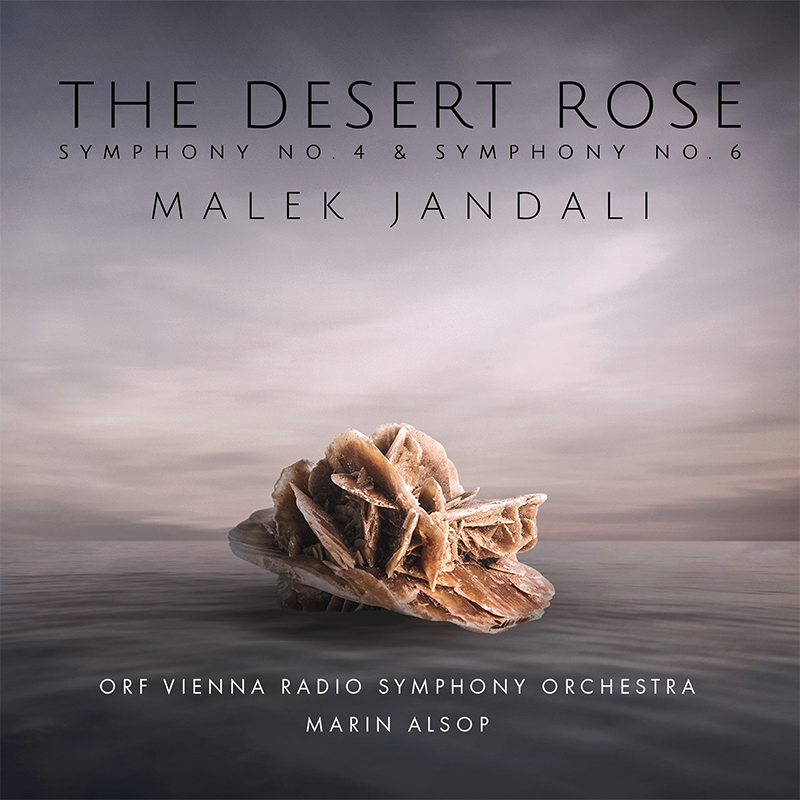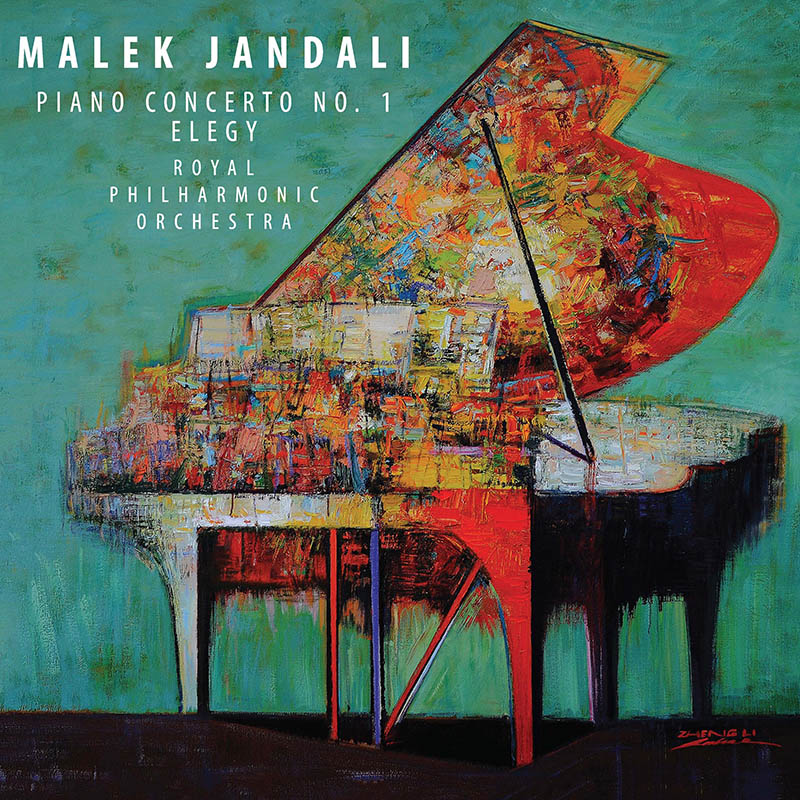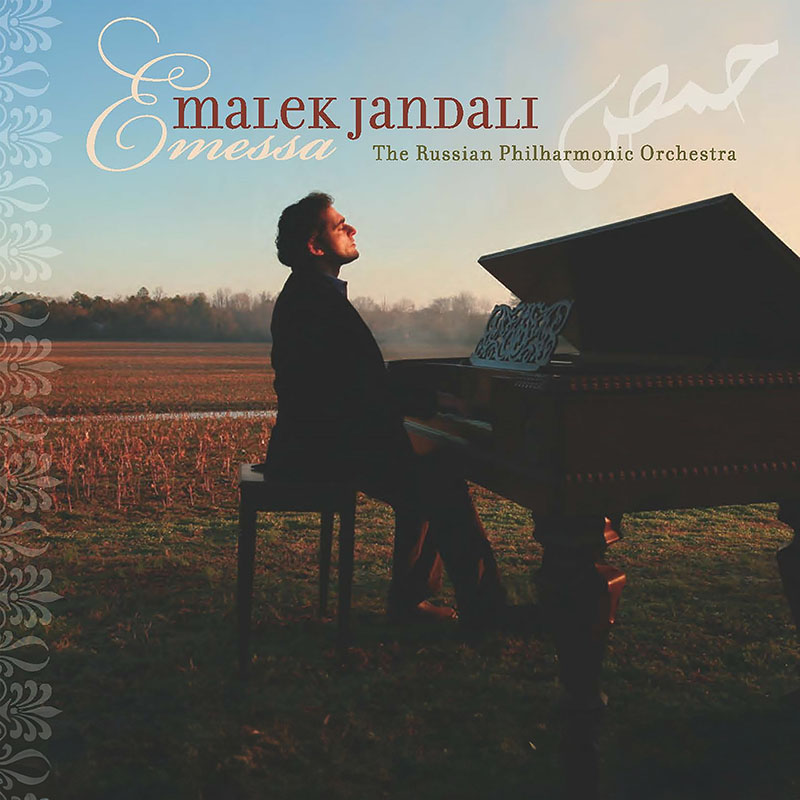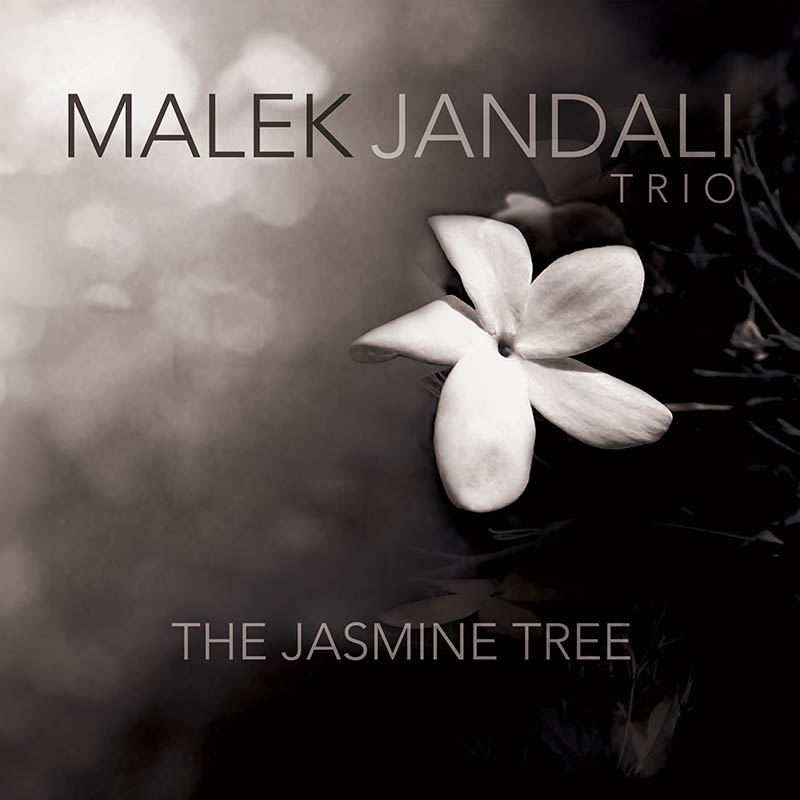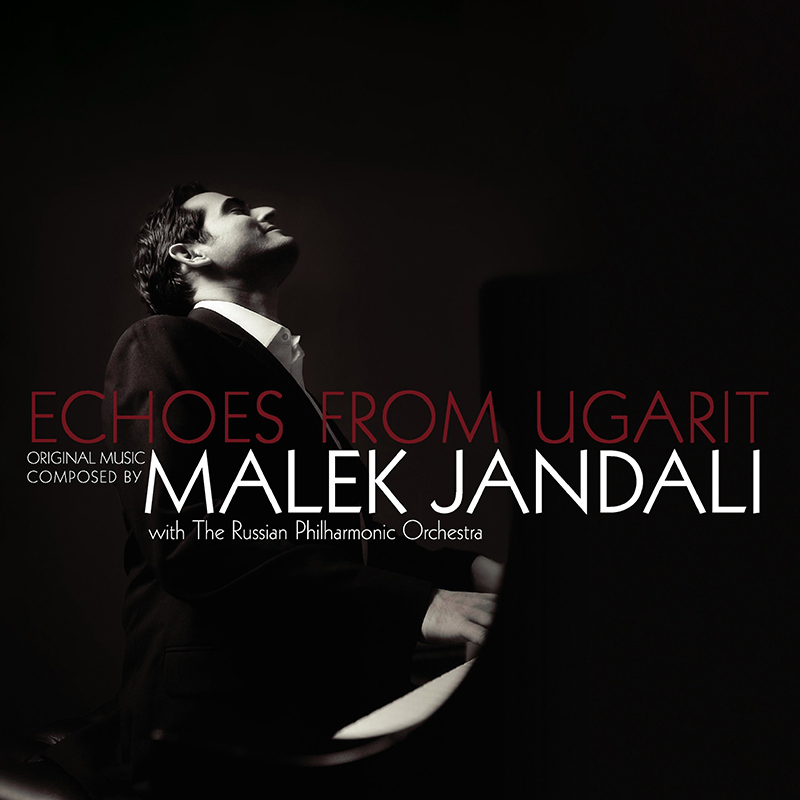
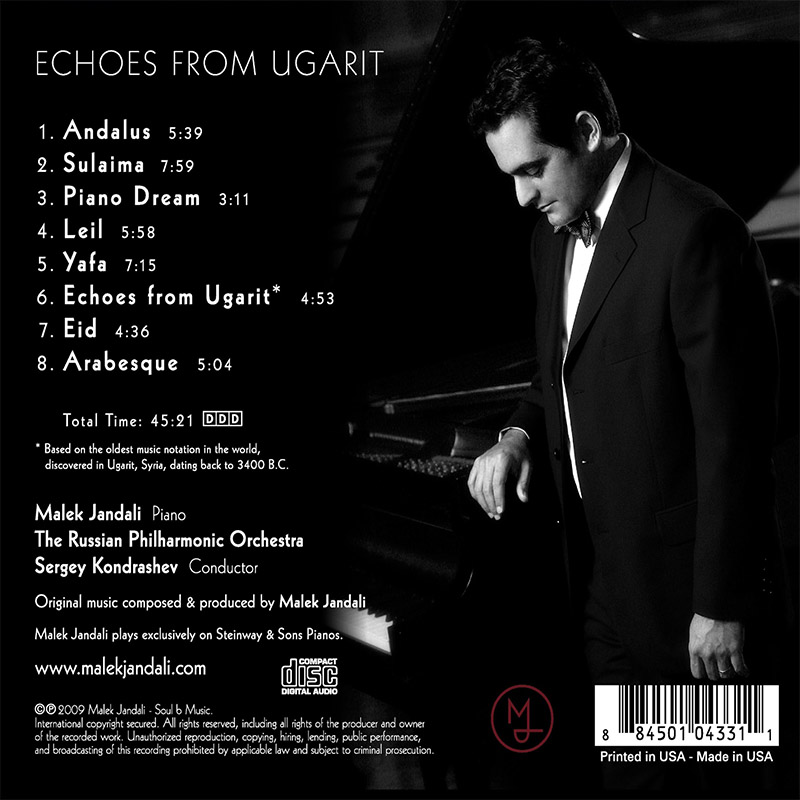
MALEK JANDALI ECHOES FROM UGARIT
Echoes from Ugarit is a 2009 album by composer and pianist Malek Jandali. The album was recorded in Moscow with the Russian Philharmonic Orchestra, conducted by Sergey Kondrashev. This album features eight piano and orchestra compositions, seamlessly blending ancient melodies with contemporary classical influences.
Jandali takes listeners on a musical journey across time and place—from the ancient city of Ugarit, where the world’s oldest musical notation was discovered, to the rich sounds of Andalusian heritage, the markets of Damascus, and the romantic echoes of Syrian folklore. His compositions evoke deep emotions, combining Eastern maqams with Western harmony, creating a seamless fusion of cultures and eras.
With its evocative melodies and intricate arrangements, Echoes from Ugarit offers a timeless experience, celebrating the deep historical and cultural roots of music while reimagining them for modern audiences. Several music videos were produced with the release of this album:
With its evocative melodies and intricate arrangements, Echoes from Ugarit offers a timeless experience, celebrating the deep historical and cultural roots of music while reimagining them for modern audiences. Several music videos were produced with the release of this album:
Piano Dream , Echoes from Ugarit ,and Eid. along with several performances with the Syrian National Symphony Orchestra at the Damascus Opera House: Leil ,Eid , Yafa , Arabesque , Echoes from Ugarit .
With its evocative melodies and intricate arrangements, Echoes from Ugarit offers a timeless experience, celebrating the deep historical and cultural roots of music while reimagining them for modern audiences. Several music videos were produced with the release of this album:
Echoes from Ugarit is a groundbreaking musical journey that revives the world’s oldest known music notation. Discovered in Ugarit (modern-day Ras Shamra, Syria) and dating back to 1400 BCE, this ancient melody—inscribed on a clay tablet in cuneiform—is the earliest recorded music in human history.
In this visionary album, composer and pianist Malek Jandali reimagines the Hurrian Hymn, a sacred composition dedicated to the goddess Nikkal, blending its 3,400-year-old musical structure with contemporary classical and orchestral elements. His signature fusion of Middle Eastern modes and Western harmonies results in a rich and expressive soundscape that bridges ancient traditions with modern sensibilities. The album features melancholic piano themes, intricate orchestral arrangements, and evocative harmonies, preserving the rhythmic essence of the original notation while introducing a fresh, cinematic depth.
The discovery of this Ugaritic hymn reshaped our understanding of music history, revealing that concepts like the seven-note diatonic scale and harmony existed far earlier than previously thought. Echoes from Ugarit sheds light on Syria’s profound contributions to global music and culture, reinforcing Ugarit’s legacy as the birthplace of both the alphabet and musical notation. By transforming an ancient melody into a timeless work of art, Jandali connects the past with the present, ensuring that the echoes of Ugarit continue to resonate across generations.
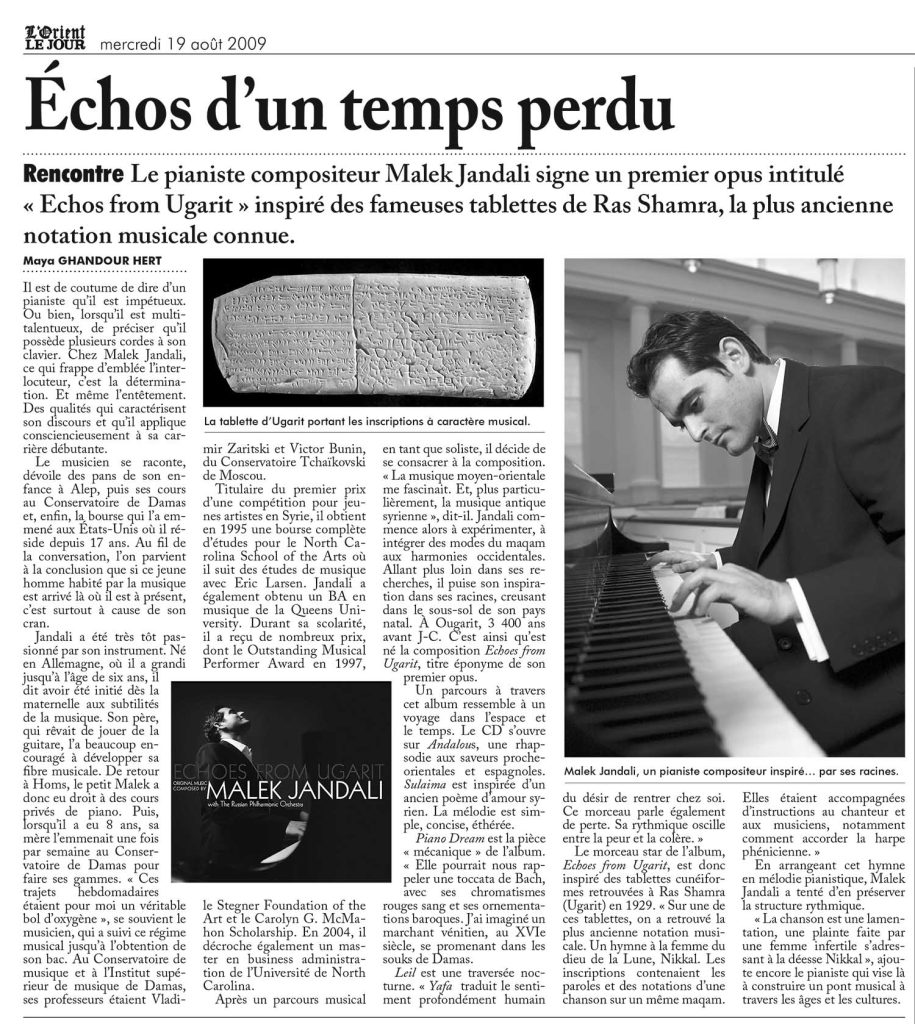
Released in 2009, Echoes from Ugarit was recorded in Moscow with the Russian Philharmonic Orchestra under the baton of maestro Sergey Kondrashev. The album features eight musical compositions for piano and orchestra, moving fluidly between distant antiquity and a more recent past. The music journeys from Syria to the world, soaring freely across time and space—through the origins of melody, through various musical eras, imagined landscapes, dreams, emotions, and artistic meditations that delve deep into form, performance, and composition. All of this unfolds with remarkable harmony, without the listener sensing any forced ideas, discord between themes, or abrupt shifts in musical ambiance. Instead, the transitions and diversity are both enjoyable and enriching, offering the listener a deeply immersive experience. Through this album, Malek Jandali takes us on a musical voyage—from Alhambra and the fragrance of Arab-Islamic civilization in Andalusia, to a romantic Syrian melody, to a piano dream set in the bustling souks of Damascus, through the Baroque era, to an Arab-tinged nocturne, a Palestinian city, and the world’s oldest musical notation discovered in Ugarit (Ras Shamra), to the joy of celebration and a dazzling Arabesque. When the journey ends, the listener appreciates the creative depth of Jandali’s work—brilliantly crafted melodies and harmonies rooted in classical music theory, combined with authentic Eastern maqams and Arab musical traditions—hallmarks of his overall artistic vision.
1- Andalus
The first piece in the album, composed by Malek Jandali and inspired by Andalusia, the Alhambra Palace, and the grandeur of Arab-Islamic Spain, takes the form of a rhapsody, blending Eastern and Spanish melodies with tango rhythms. The piece reflects the multicultural, multi-faith, and artistic richness of Andalusia and the influence of Arab-Islamic civilization on Europe. It opens with a confident, majestic piano entrance, combining beauty, grandeur, nostalgia, and subtle melancholy. The piano then dances solo to a tango rhythm before being joined by the strings. The main musical theme recurs with expressive variations, dipping briefly into a quieter, emotional register, before cascading in rapid piano keystrokes like falling rain. These quick notes taper off gently, as if catching their breath before running again. The music then surges with renewed vigor, as the violin echoes themes previously played by the strings. In the final section, all string and percussion instruments come together. This piece captivates with its lively melody, appealing to both Arab and Western audiences, its intricate harmonic richness, and its evocation of a golden chapter in Arab-Islamic history.
2- Salima
A romantic Syrian song from the early 1950s, originally sung by Zakia Hamdan, with lyrics by Nawfal bin Ghanem Elias and music by Khaled Abu Al-Nasr. Its opening lines—“I see Salma, unjustly, has turned away from me… Yet yesterday she was part of me”—remain deeply rooted in Syrian emotional memory. Inspired by this song, Jandali composed the orchestral piece Salimah and dedicated it to his maternal grandfather, Burhan Daroubi, who used to sing it to his wife—Jandali’s grandmother. The eight-minute composition is the album’s most purely emotional piece. It begins with slow string tremolos and a delicate piano line, introducing the main melody. Woodwinds join the strings as the piece flows with tenderness. The music gradually rises to a climax punctuated by timpani, then recedes into a lyrical piano-woodwind dialogue. The harp transports the music into a new tone, with trembling strings and a rising emotional arc that leads to another climax, again featuring piano flourishes and timpani. Finally, the piano—like the lover—utters its final two notes, and the timpani signals the end. Salimah is one of Jandali’s most emotionally complex and structurally intricate works—an expressive, romantic piece reminiscent of Tchaikovsky’s portrayals of personal sorrow and lost love.
3- Piano Dream
A burst of ornamental beauty and musical color defines Piano Dream, composed in E minor. Rich in technique and reminiscent of Bach’s toccatas, this piece showcases Jandali’s mastery as a pianist. Listeners are transported to the Baroque era: a 16th-century Venetian merchant wanders through the aromatic, vibrant markets of old Damascus. The piano begins with brisk, Arab-inflected notes before the strings, brass, and percussion join in developing the melody. Midway, the music softens—piano thoughts drifting introspectively—before engaging in a brief dialogue with the strings, joined by brass and percussion in a surging crescendo that elevates the piece to Baroque grandeur, enhanced by cello, piccolo, and their spirited tonal presence. The result is an elegant, invigorating musical journey.
4- Leil
There is a unique beauty in a nocturne with an Arab soul, melodies that speak to our hearts with familiar sorrow and touching musical phrases. While all humans respond to nocturnes—such as those by Chopin—Jandali’s Night, in G minor, offers something instantly resonant to Arab listeners and intriguing to Western ones. This is music of quiet reflection, solitude, inner dialogue, and emotional surrender. It opens with a flowing piano monologue—two introductory notes followed by a recurring melancholic theme, presented with variations and increasing emotional intensity, especially when the strings enter. At the midpoint, the theme is played an octave higher, then softened with the French horn, echoing the opening. The piano returns, contemplative and gentle, fading into a peaceful silence. Night is among Jandali’s finest compositions, combining emotional depth, lyrical meditation, and virtuosic piano performance.
5- Yafa
Dedicated to the Palestinian people, Jaffa is a tribute to the city known as the “Bride of the Sea.” In F minor, the piano opens with a steady melody, soon joined by strings. The music builds quickly and grows restless before returning to the main theme, colored by woodwinds and the gentle chime of the triangle. A dynamic wave of tension and calm, sorrow and anger, longing and resolve, defines the piece. The melody mourns lost land and expresses a deep yearning for return. The composition, though wordless, powerfully conveys these emotions with precise musical phrasing, complex structures, and evocative harmonies. Jaffa connects a part of Palestine to the world of symphonic music, touching the Arab listener’s soul.
6- Echoes from Ugarit
Malek Jandali was the first Arab composer to arrange the oldest known musical notation in history, discovered in ancient Ugarit (modern-day Ras Shamra near Latakia, Syria)—a civilization rich in literature, music, mythology, and even musical notation. The clay tablet, dating to the 14th century BCE, contains lyrics and musical directions for a singer and lyre player. Jandali transcribed it in D minor, arranged it for orchestra and piano, and made it audible to global audiences for the first time. The ensemble includes flute, oboe, timpani, percussion, clarinet, bassoon, French horn, harp (similar to the ancient lyre), violins, viola, cello, and double bass. The original hymn, sung by a woman praying to the goddess Nikkal for fertility, evokes devotion, sorrow, and yearning. Echoes from Ugarit, a five-minute piece, begins with a solemn orchestral entrance—timpani and brass setting the tone—followed by gentle piano notes evoking prayer and hope. A single repeated tone underscores the plea’s urgency. As the piece unfolds, the piano seems to give voice to the woman’s lament and longing. The music swells toward the end, expressing the intensity of her appeal. This composition is a rare and profound cultural bridge, bringing ancient Syrian civilization to life through modern symphonic music. It aligns with UNESCO’s vision for preserving Syria’s cultural heritage.
7- Eid
Inspired by traditional Syrian melodies, Eid is a jubilant celebration of life, family, and music. It captures the festive spirit of Eid in a Syrian household, blending Arabic tunes, jazz, improvisation, and rhapsodic structures in a vivid musical painting. The piece bursts with color, motion, and joy—swift, graceful leaps, melodic interplay between instruments, and diverse sonic textures. In the middle, the flute briefly plays the melody of a folk song: “Oh my beloved, don’t blame me, for love is deadly… I’m infatuated and long for union.” This moment of nostalgia enriches the composition before it resumes its bright harmony and vibrant momentum. Eid exemplifies Jandali’s stylistic creativity, his tightly woven musical texture, and expressive range.
8- Arabesque
An exquisitely refined piece rooted in the artistic spirit of Arab-Islamic civilization, Arabesque draws on the intricate patterns and aesthetics found in architecture, calligraphy, and music. The term “arabesque” entered European art through the influence of Arab culture in Spain, and was embraced by classical composers like Robert Schumann and Claude Debussy. Jandali’s Arabesque features serene melodies within a repeating rhythmic structure, where the end returns to the beginning. Gradually, the calm notes give way to livelier ones, then settle again. A beautiful, flowing theme recurs, interwoven with rich textures and evolving motifs, building in intensity and elegance. This composition affirms the continued presence and influence of Arab artistry in both classical and contemporary music.

